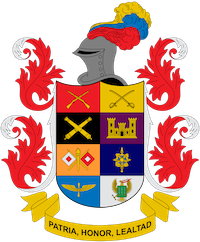Andean community approach on drugs
Abstract
According to the Office of National Drug Control Policy of the White House, Colombia, Peru and Bolivia produce the totality of cocaine that is exported to consumer countries all over the world. However, after many years trying to reduce the plantation of coca plants in these three countries, it has been observed an increase in the records of the cultivations during the past ten years. This article assesses the policy to fight against the drug phenomena through an international collective approach, materialized in the Andean Community of Nations. Also, it is proposed to cause the increase in the coca plantations despite the efforts of the national governments and international organizations.
Downloads
References
Adkisson, R. (2003) The Andean Group: institutional evolution, intraregional trade, and economic development, Journal of economic issues, vol. XXXVII Nº2. https://doi.org/10.1080/00213624.2003.11506584
Bureau for International Narcotics and Law Enforcement Affairs (2017) International Narcotics Control Strategy Report: Drug and Chemical Control, United States Department of State, retrieved from: https://www.state.gov/documents/organization/268025.pdf
Balzacq, T. (2005) The Three Faces of Securitization: Political Agency, Audience and Context, European Journal of International Relations, 171-201. https://doi.org/10.1177/1354066105052960
Buzan, B., Waever, O., and de Wilde, J. (1998) Security: a new framework of analysis. Lynne Rienner Publisher. https://doi.org/10.1515/9781685853808
Campbell, D. (1992) Writing security: United States foreign policy and the politics of identity. University of Minnesota Press.
Cárdenas, R. (2012) Comunidad Andina frente al problema de las drogas, Portafolio, Bogotá.
Comunidad Andina de Naciones (1986) Convenio “Rodrigo Lara Bonilla” entre los países miembros del Acuerdo de Cartagena, sobre cooperación para la prevención del uso indebido y la represión del trafico ilícito de estupefacientes y sustancias psicotrópicas, retrieved from: http://apw.cancilleria.gov.co/Tratados/adjuntosTratados/C907E_OTROS_M-CONVRODRIGOLARABONILLA1986-TEXTO.PDF
Consejo Andino de Ministros de Relaciones Exteriores (2001) Decisión 505: Plan Andino de cooperación para la lucha contra las drogas ilícitas y delitos conexos, Comunidad Andina de Naciones, Valencia, Venezuela.
Crick, E. (2012) Drugs as an existential threat: An analysis of the international securitization of drugs, International Journal of Drugs Policy, 23, 407-414. https://doi.org/10.1016/j.drugpo.2012.03.004 PMid:22554852
Cubides, O. (2014) La violencia del narcotráfico en los países de mayor producción de coca: los casos de Perú y Colombia, Papel Político, 19(2), 657-690. https://doi.org/10.11144/Javeriana.PAPO19-2.vnpm
Diaz, B. (2002) Política exterior de los EE.UU. hacia Colombia: el paquete de ayuda de 1.300 millones de dólares de apoyo al Plan Colombia y la Región Andina, Ediciones Universidad de Salamanca, América Latina Hoy, 31, 2002, pp. 145-186.
Falconi, J. (2012) Informe final análisis de los factores económicos que inducen al agricultor de las zonas cocaleras peruanas a la decisión de cultivar o no coca, Programa Anti-drogas en la Comunidad Andia PRADICAN, retrieved from: http://www.comunidadandina.org/DS/Inf.%20Eco%20coca%20Per..pdf
Office of the High Commissioned For Peace (2016) Final Agreement for the End of the Armed Conflict and the Construction of a Stable and Long-lasting Peace, retrieved from: http://www.altocomisionadoparalapaz.gov.co/procesos-y-conversaciones/Documentos%20compartidos/24-11-2016NuevoAcuerdoFinal.pdf
Garzón, J. (2017) ¿En qué va la sustitución de cultivos ilícitos? Informe trimestral #2, Fundación Ideas para la Paz, retrieved from: http://www.ideaspaz.org/publications/posts/1596
Guerrero, R. (2013) Informe sobre la implementación de programas de desarrollo alternative en zonas de influencia de la coca y sus impactos en los países de la subregión andina, Programa Anti-drogas en la Comunidad Andina PRADICAN, retrieved from: http://www.comunidadandina.org/DS/Inf.%20Inv.%20Zonas%20Coca.pdf
Jelsma, M. And Youngers, C. (2017) Coca and the Colombian peace accord: a commentary on the pilot substitution project in Briceño, Advocacy for Human Rights in the Americas, retrieved from: https://www.wola.org/analysis/coca-colombian-peace-accords-commentary-pilot-substitution-project-briceno/
Martinez, C. (2012) The “war on drugs” and the “new strategy”: identity constructions of the United States, U.S. drug users and Mexico, Mexican Law Review, (V), 245-275. https://doi.org/10.1016/S1870-0578(16)30025-7
Mansilla, H.C.F. (2009) Neoliberalismo, drogas y valores sociales: el debate en el área andina a partir de 1990, Revista de Ciencias Sociales 123-124, pp. 93-103.
Ministry of Foreign Relations of Colombia (n.d.) Library of International Treaties, retrieved from: http://apw.cancilleria.gov.co/tratados/SitePages/BuscadorTratados.aspx?TemaId=37&Tipo=B
Molano, G. (2007) El dialogo entre la Comunidad Andina y la Unión Europea sobre drogas ilícitas, Colombia Internacional 65, ene-jun 2007, pp.38-65. https://doi.org/10.7440/colombiaint65.2007.02
Office of National Drug Control Policy (2021) ONDCP releases data on coca cultivation and production in the Andean Region, retrieved from: https://www.whitehouse.gov/ondcp/briefing-room/2021/07/16/ondcp-releases-data-on-coca-cultivation-and-potential-cocaine-production-in-the-andean-region/
Presidencia de la República (May 29th, 2017) Decreto Ley 896 de 2017: por el cual se crea el Programa Nacional Integral de Sustitución de Cultivos de uso Ilícito, retrieved from: http://es.presidencia.gov.co/normativa/normativa/DECRETO%20896%20DEL%2029%20DE%20MAYO%20DE%202017.pdf
Niño, C. (2011) Crimen organizado y gobernanza en la región andina: cooperar o fracasar, Friedrich Ebert Stiftung, Quito.
Raffo, L., et Al. (2016) Los efectos globo en los cultivos de coca en la Región Andina (1990-2009), Apuntes del CENES (35) 61, pp. 207-236. https://doi.org/10.19053/22565779.3426
Semana (2017) No veo la estrategia para enfrentar los cultivos de coca, Bogotá, retrieved from: http://www.semana.com/nacion/articulo/experto-en-narcotrafico-daniel-rico-critica-politica-de-cultivos/517393
Weldes, J. (Ed.). (1999). Cultures of insecurity: states, communities, and the production of danger (Vol. 14). U of Minnesota Press.

This work is licensed under a Creative Commons Attribution-NonCommercial-NoDerivatives 4.0 International License.













